Let's be honest - Android updates shouldn't be scary. Yet somehow, a simple software update can send people into panic mode. Here's the truth: it's way easier than you think, and I'll show you exactly how to do it without the tech jargon.
With Android releasing minor updates monthly to fix bugs and improve security, plus a major operating system update each year, staying current has never been more important for your device's performance and security. According to Asurion, Android releases a major operating system update each year, making it crucial for users to understand the update process to take full advantage of the latest features and improvements.
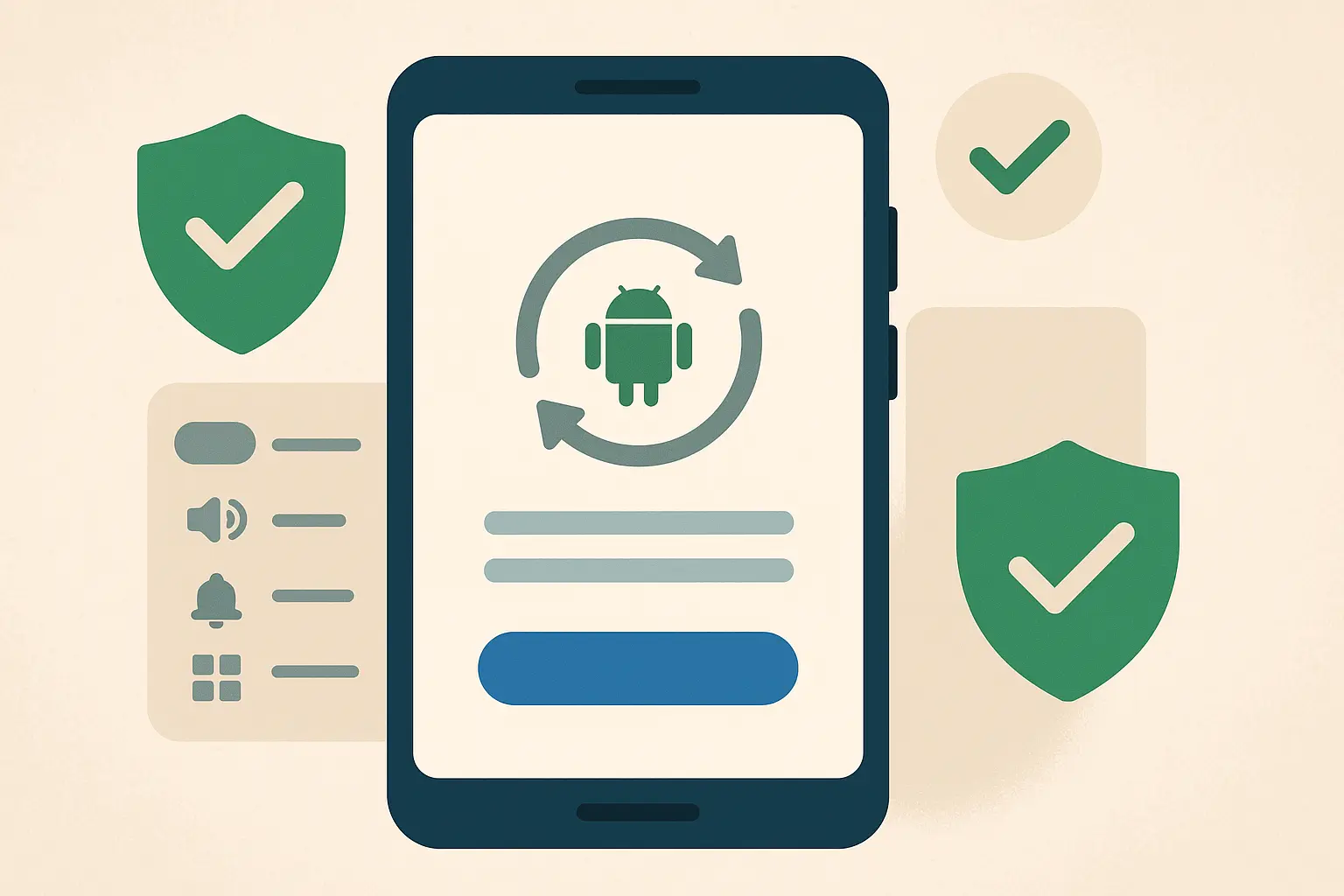
Table of Contents
Why Your Phone Needs Updates
Types of Updates That Actually Matter
How Android Gets Updates to Your Phone
When Your Phone Won't Update Automatically
Fixing Common Update Problems
Before and After Your Update
Protecting Your Updated Device
The Bottom Line
TL;DR - Quick Takeaways
Android updates include major version changes, monthly security patches, and feature improvements that keep your phone secure and functional
Most updates happen automatically over-the-air, but you can manually check through Settings > System > System Update
Always backup your data and ensure 50%+ battery before starting any update
Common issues like download failures can usually be fixed by clearing cache, switching networks, or freeing up storage space
If updates fail completely, factory reset might be necessary (but backup everything first)
Post-update optimization includes checking app compatibility and exploring new features
Think of updates as your phone's immune system and performance booster rolled into one. Skip them, and you're basically leaving your digital front door unlocked while missing out on improvements that could make your daily phone experience way better.
Why Your Phone Needs Updates
Android updates aren't random software changes that developers push out to annoy you - they're essential improvements that keep your phone secure, fast, and functional.
Remember the last time you ignored an update notification? Maybe you were busy, maybe you didn't want to deal with changes, or maybe you just forgot. I get it - we've all been there. But here's what's actually happening behind those notifications.
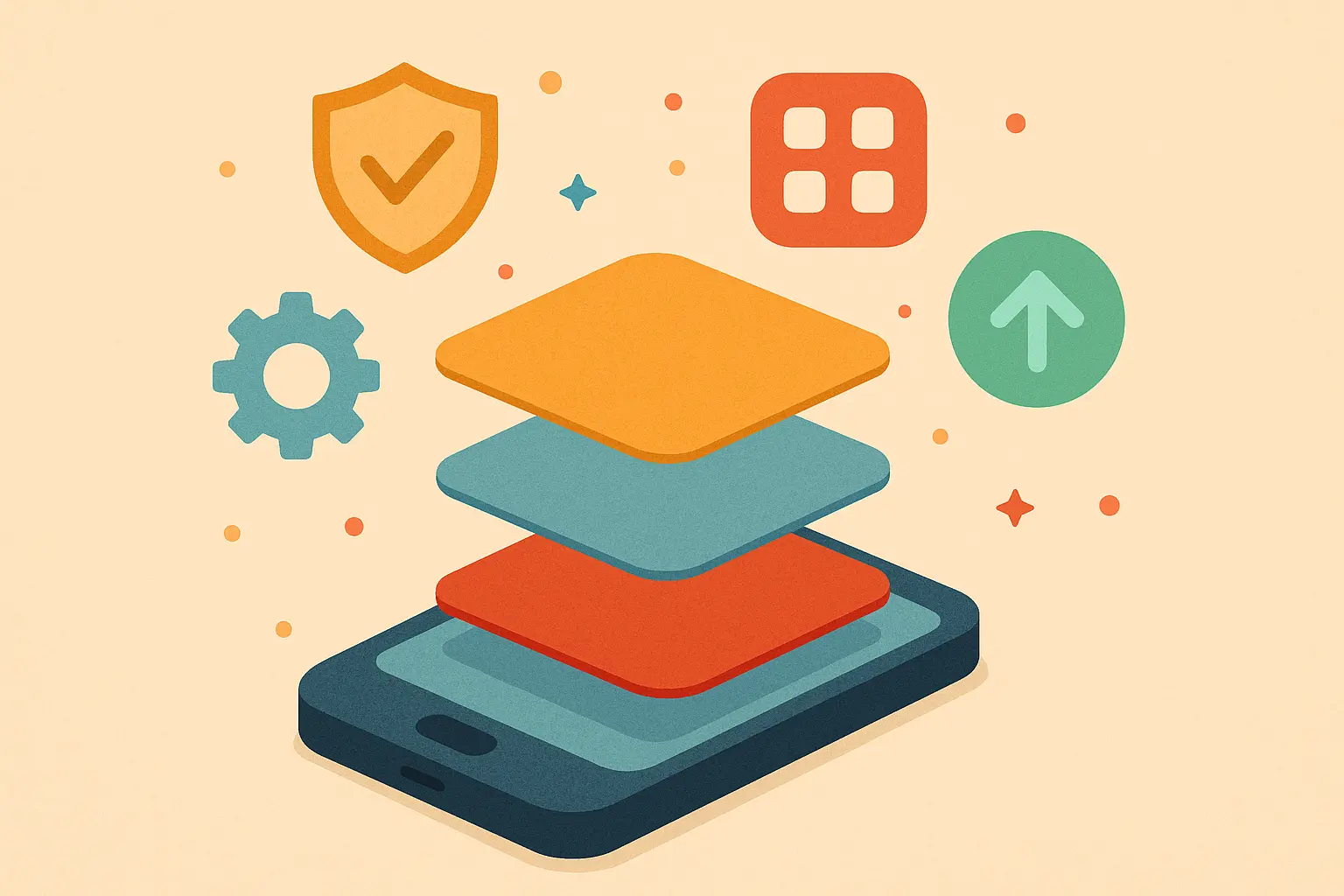
What Updates Actually Do
Updates serve three main purposes: protecting your device from security threats, improving performance and fixing bugs, and adding new features that make your phone better to use.
Every month, security researchers discover new vulnerabilities in Android systems. These aren't theoretical problems - they're real threats that hackers actively exploit. When Google releases security updates, they're literally patching holes that could let someone access your personal information, banking apps, or private messages.
Performance improvements might seem less dramatic, but they add up. I've seen phones that were sluggish and battery-hungry become noticeably faster and more efficient after a major version update. Bug fixes resolve those annoying little issues you might've learned to live with - crashes, connectivity problems, or features that don't quite work right.
Update Purpose |
Benefits |
Impact on Device |
|---|---|---|
Security Protection |
Fixes vulnerabilities, blocks malware |
Keeps personal data safe |
Performance Improvements |
Faster operation, better battery life |
Smoother daily usage |
New Features |
Enhanced functionality, UI improvements |
Better user experience |
Bug Fixes |
Resolves crashes, compatibility issues |
More reliable operation |
How the Update System Works
Android uses over-the-air updates, staged rollouts, and A/B system updates to get improvements to your phone safely and efficiently. These systems work behind the scenes to minimize disruption while maximizing compatibility across different devices.
The system's more complex than most people realize, but that complexity protects you. Google learned from early Android days when updates could brick phones or cause widespread problems. Now, multiple safety nets ensure that when an update reaches your device, it's been tested extensively.
Over-the-Air Updates Made Simple
OTA updates download directly through your internet connection without needing a computer. Remember when updating your phone meant connecting it to a computer and hoping nothing went wrong? Those days are long gone. Over-the-air updates happen seamlessly in the background, downloading while you use your phone normally.
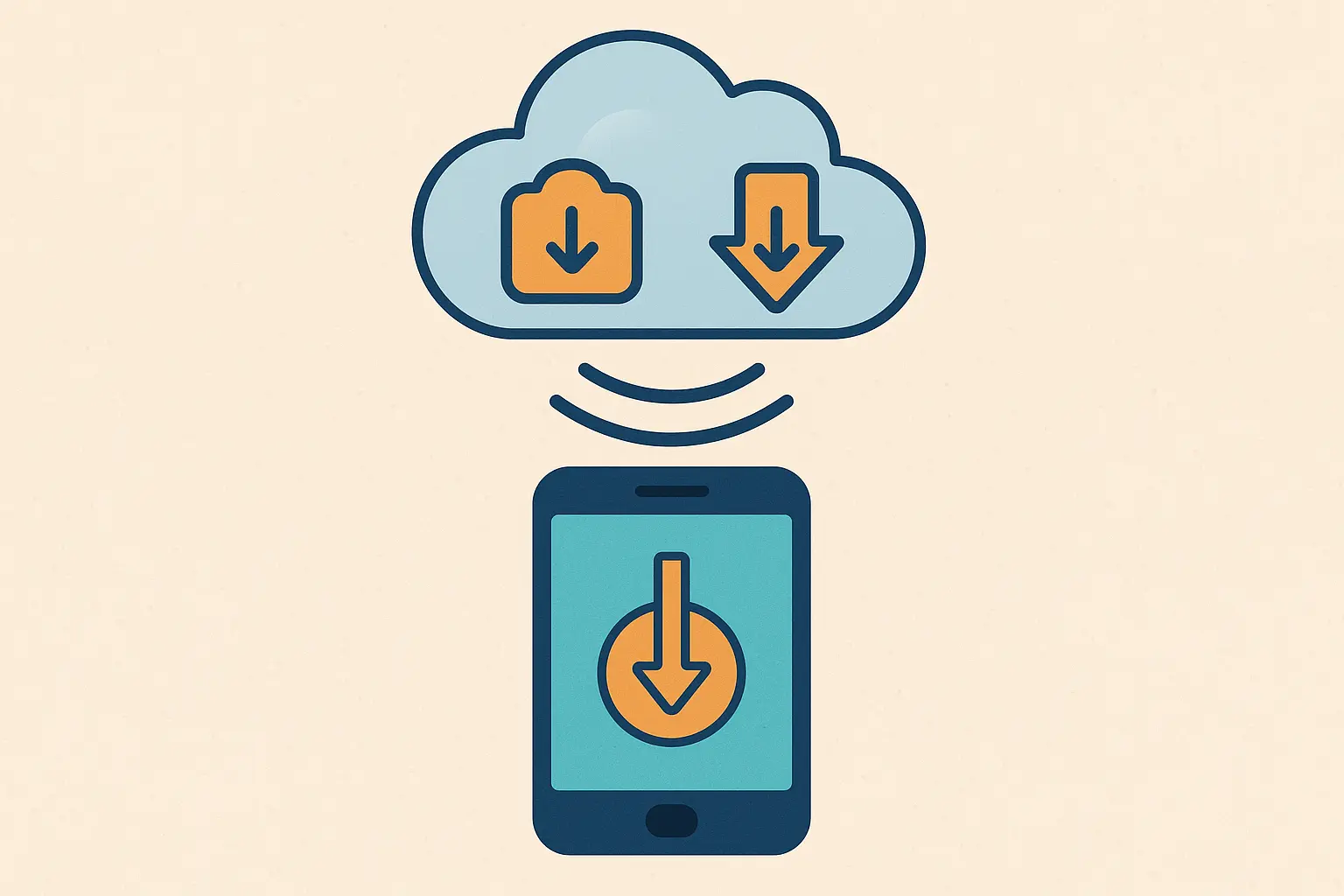
Why Google Uses Staged Rollouts
Google releases updates gradually to small groups first, letting them catch and fix problems before everyone gets the update. If you've ever wondered why your friend got an update weeks before you did, staged rollouts explain the mystery.
Google starts by releasing updates to maybe 1% or 5% of users, then monitors for problems. If everything looks good, they gradually increase the rollout percentage until everyone has access. Might seem frustrating when you're waiting for a cool new feature, but it's actually protecting you from potential problems.
A/B System Updates Explained
Modern Android phones use dual partition systems that install updates in the background while you use your device normally. This means seamless transitions and the ability to rollback if something goes wrong.
If you have a Pixel phone, you might notice your device downloading an update while you're using it normally. The new system installs on partition B while you continue using partition A, then switches over after a simple restart - no lengthy installation screens or downtime.
Types of Updates That Actually Matter
Different Android updates serve different purposes, and knowing what you're dealing with helps set proper expectations. There are major version updates that transform your interface, monthly security patches that protect against threats, and feature updates that add new capabilities.
Just as choosing the right protective gear for your device matters, understanding different update types helps you make informed decisions about the most protective phone cases that complement your software security.
Major Version Updates
These comprehensive updates introduce entirely new Android versions with significant interface changes, enhanced capabilities, and new features that can completely transform how you use your device.
Major version updates are the big events in the Android world. When Android 14 or 15 launches, you're getting a fundamentally different operating system with new design elements, privacy features, and capabilities that weren't possible before.
Recent developments show manufacturers are enhancing major updates significantly. "Nothing OS 4.0 Android 16 update" from 9to5Google demonstrates how companies are adding visual updates with "sharper, more thoughtful design across every layer," including new lock screen clocks, updated Quick Settings panels, and even new "Extra Dark" themes with true black backgrounds.
I always recommend waiting a few weeks after major version updates become available before installing them. Early adopters sometimes encounter compatibility issues with specific apps or unexpected battery drain while the system optimizes itself.

Monthly Security Updates
Security patches are released monthly (typically the first Monday) to address vulnerabilities and protect against emerging threats. These might seem boring, but they're arguably the most important updates for keeping your personal information safe.
Here's something that might surprise you: security updates are often more critical than major version updates. While new Android versions get all the attention, monthly security patches are quietly protecting you from real, active threats that hackers are trying to exploit right now.
The critical importance of security updates is highlighted by recent vulnerabilities. "Samsung security update" from Android Police reports that Samsung devices running Android 13 and newer have a critical vulnerability (SVE-2025-1702) in their image processing library that hackers can exploit to execute arbitrary codes and potentially install spyware.
I treat security updates with the same urgency as locking my front door. They might not add flashy new features, but they're protecting everything valuable on your phone - your photos, messages, banking information, and personal data.
Feature Updates
Smaller updates that add new functionality or improve existing features without changing your core Android version. These often come through Google Play Services and can enhance your daily phone experience in subtle but meaningful ways.
Feature updates are the unsung heroes of the Android ecosystem. They arrive quietly through Google Play Services updates and suddenly your camera has a new mode, your keyboard's smarter, or your battery management is more efficient. You might not even notice them immediately, but they're constantly improving your phone experience.
These updates are particularly clever because they don't require full system updates. Google can push new features to billions of Android devices simultaneously, regardless of what version of Android they're running.
How Android Gets Updates to Your Phone
Ever wonder why your Samsung gets updates weeks after your friend's Pixel? It's not random - there's actually a whole chain of people involved in getting that update to your phone.
The Update Journey
Pixel phones get updates first because Google controls the whole process. No middlemen, no waiting for Samsung to add their custom interface, no carrier testing. Google pushes it out, and boom - you've got it.
Everyone else waits longer because manufacturers like Samsung need to make sure their custom features work with Google's changes. Then carriers like Verizon want to test it with their network and add their own apps. More hands in the pot = longer wait times.
Here's the typical timeline:
Update Source |
Speed |
Customization Level |
Typical Delay |
|---|---|---|---|
Google Direct (Pixel) |
Fastest |
Minimal |
0-7 days |
Manufacturer (Samsung, OnePlus) |
Moderate |
High |
2-8 weeks |
Carrier Modified |
Slowest |
Very High |
1-6 months |
Android One |
Fast |
Minimal |
1-4 weeks |
Google's Direct Pipeline
When Google releases a new Android version, Pixel phones are first in line. There's no waiting for Samsung to add their interface tweaks or for Verizon to test carrier-specific features. Google pushes the update directly to Pixel devices, usually within days of the official announcement.
Manufacturer Customizations
Samsung's One UI, OnePlus's OxygenOS, and other manufacturer interfaces require significant work to integrate with new Android versions. Engineers need to ensure that custom features work properly with Google's changes, test for compatibility issues, and sometimes redesign interface elements to match the new Android design language.
Carrier Involvement
Mobile carriers add another layer to the update process, including network optimizations and carrier-specific features before final delivery. Carriers test updates with their specific network configurations, add their own apps and services, and sometimes modify system behaviors to work better with their infrastructure.
When Your Phone Won't Update Automatically
Your phone's supposed to update automatically, but sometimes it just... doesn't. Maybe it's stuck, maybe it's being stubborn, or maybe your carrier's dragging their feet. Here's how to take control.
When troubleshooting update issues, having reliable accessories becomes crucial. Consider investing in the best car charger to ensure your phone stays powered during lengthy update processes.

The Simple Fix (Try This First)
Before you do anything fancy, manually check for updates:
Samsung: Settings > Software update > Download and install
Pixel/Stock Android: Settings > System > System update
Other phones: Look for "System update" or "Software update" in Settings
Make sure you have:
Battery above 50%
Stable Wi-Fi connection
At least 2GB free storage
The manual check forces your phone to contact Google's servers right now instead of waiting for the scheduled check. Sometimes that's all you need.
Installing Updates Safely
Once you've found an available update, proper installation requires attention to battery level, network stability, and available storage space. Taking a few minutes to ensure optimal conditions prevents most installation problems.
When Things Get Stubborn
If the simple method doesn't work, you've got more advanced options:
ADB Sideloading
Download the update file directly from Google and install it through your computer. Requires enabling developer options, but it bypasses your phone's broken update system entirely.
ADB sideloading involves downloading the actual update file from Google and manually installing it through a computer connection. This bypasses the normal over-the-air system entirely, which can be useful when your phone's update mechanism is broken but the hardware is fine.
Factory Reset (Nuclear Option)
The nuclear option. Wipes everything and gives you a fresh start. Only do this if you've backed up everything and other methods failed.
Factory image flashing is the nuclear option - it wipes everything and installs a completely fresh version of Android. I only recommend this when other methods have failed and you're dealing with serious system corruption or persistent update failures.
Fixing Common Update Problems
Update problems are frustrating, but most issues have straightforward solutions. The most common update problems fall into predictable categories, and there are systematic approaches for each one.
While resolving update issues, protect your device with top rugged phone cases that can withstand the stress of multiple troubleshooting attempts.
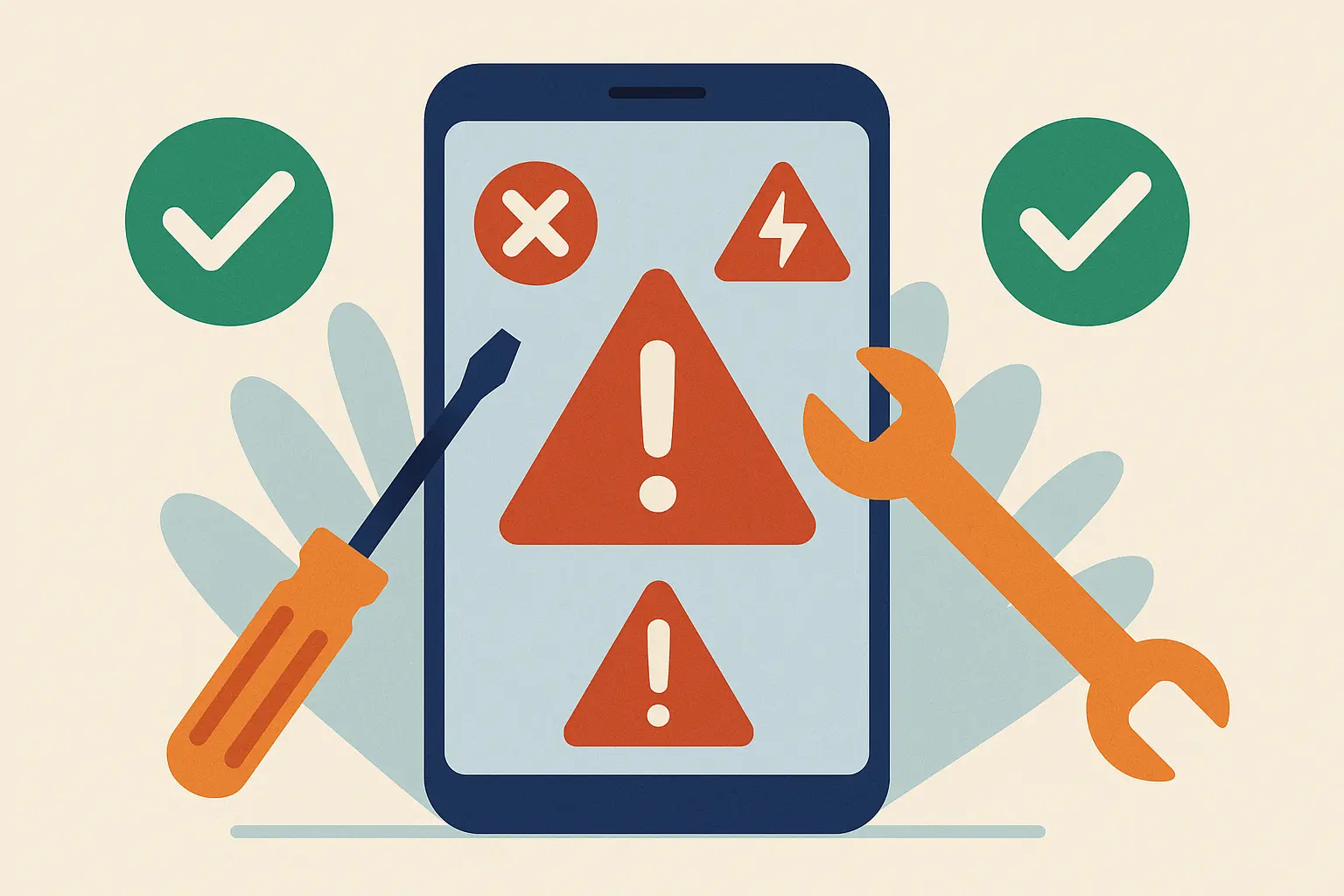
Download Keeps Failing
Usually caused by: Not enough storage, bad internet, or Google's servers having a bad day.
Quick fixes:
Free up space by deleting old photos/videos
Switch from Wi-Fi to mobile data (or vice versa)
Try again in a few hours if it's a server issue
Storage tip: Updates can need 1-4GB of space. If you're cutting it close, clear out some room first.
According to Asurion, downloading the latest operating system on your Android device usually requires a lot of free space, which is why checking your current available storage space at Settings > Battery and device care > Storage is crucial before attempting updates.
Network issues are trickier to diagnose. Try switching between Wi-Fi and mobile data to see if one works better than the other. Sometimes your Wi-Fi connection appears strong but has intermittent drops that interrupt the download process.
Cache and System Fixes
System cache corruption can interfere with download processes in ways that aren't immediately obvious. Clearing the cache partition (if your phone supports it) or clearing individual app caches can resolve conflicts that prevent successful downloads.
Installation Errors
Try safe mode: Hold power button, then press and hold "Power off" until you see "Safe mode." If the update works in safe mode, one of your apps is causing problems.
Still not working? Factory reset time. Back everything up first - this will wipe your phone clean but usually fixes stubborn installation issues.
Safe Mode Troubleshooting
Safe mode testing isolates the problem by eliminating variables. When updates work in safe mode but fail in normal mode, you know that one of your installed apps is causing the conflict.
If your phone keeps failing to install updates, boot into safe mode by holding the power button, then press and hold "Power off" until you see "Safe mode" option. Try the update again - if it works in safe mode, a third-party app is likely causing the interference.
Before and After Your Update
Smart update management involves preparation before installing updates and optimization afterward. Successful updates aren't just about the installation process - they're about the entire experience from preparation through post-update optimization.
Prep Work (Takes 5 Minutes, Saves Hours of Headache)
Before starting any major update process, ensure your device has adequate power with the best wireless phone chargers to avoid interruptions during critical installation phases.
Back up everything:
Turn on Google backup in Settings
Make sure photos are synced to Google Photos
Export contacts if you're paranoid
Write down any important app passwords
Check your basics:
Charge to at least 50%
Connect to reliable Wi-Fi
Close apps you don't need running
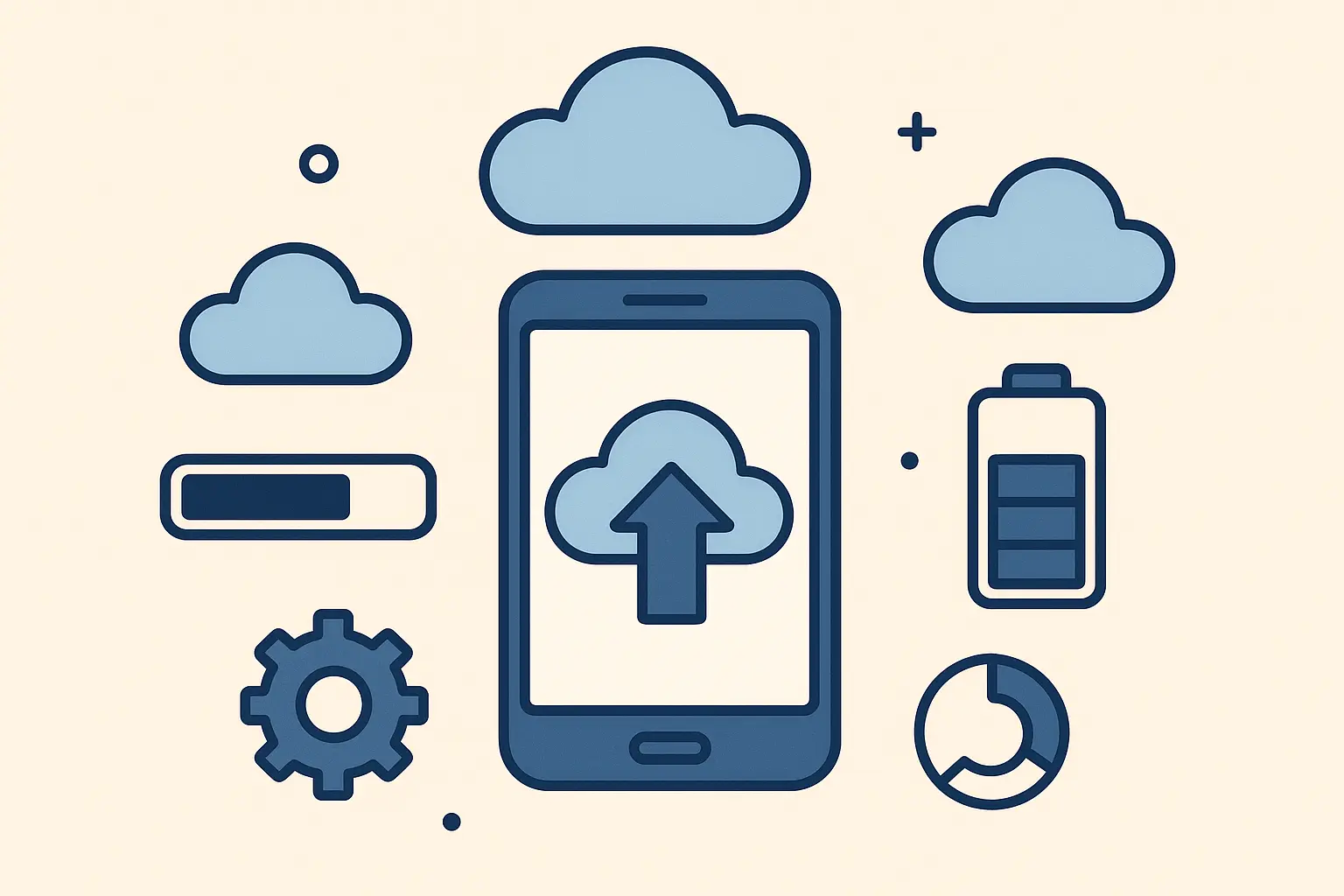
Bulletproof Backup Strategies
Don't rely on a single backup method. Use multiple approaches because different backup systems protect different types of data. Google's built-in backup handles most things well, but some apps and data types need special attention.
Complete Backup Checklist:
Google Account sync enabled
Photos backed up to Google Photos or cloud service
Contacts exported or synced
App data backed up via Google Backup
Important files copied to external storage
SMS/call logs backed up with third-party app
Authentication app backup codes saved
Storage and Battery Optimization
Battery management during updates is more important than most people realize. Updates can take 30 minutes to several hours depending on the size and your device's processing speed. Starting with insufficient battery creates unnecessary stress and potential problems.
After the Update
The work doesn't end when the update finishes installing. Post-update optimization ensures you're getting the full benefit of improvements while catching any issues before they become bigger problems.
Quick health check:
Open your most-used apps to make sure they work
Test camera, Wi-Fi, Bluetooth
Check if your fingerprint/face unlock still works
Look for any new features in Settings
New features: Don't assume you know everything your updated phone can do. Poke around in Settings - you might find new camera modes, battery optimizations, or privacy features you didn't know about.
Post-Update System Checks
Post-Update Verification List:
All apps launching properly
Wi-Fi and cellular connectivity working
Camera and media functions operational
Battery life performance normal
Fingerprint/face unlock functioning
Bluetooth devices reconnected
Notification settings preserved
I spend about 10 minutes after each update going through this verification process. It might seem excessive, but catching problems early saves time and frustration later.
Exploring New Features Effectively
New updates often include features that aren't immediately obvious. Taking time to explore settings and capabilities helps you discover improvements that can enhance your daily phone experience.
After updating your device, explore new camera features and protect your lens with the best iPhone glass screen protectors to maintain optimal photo quality.
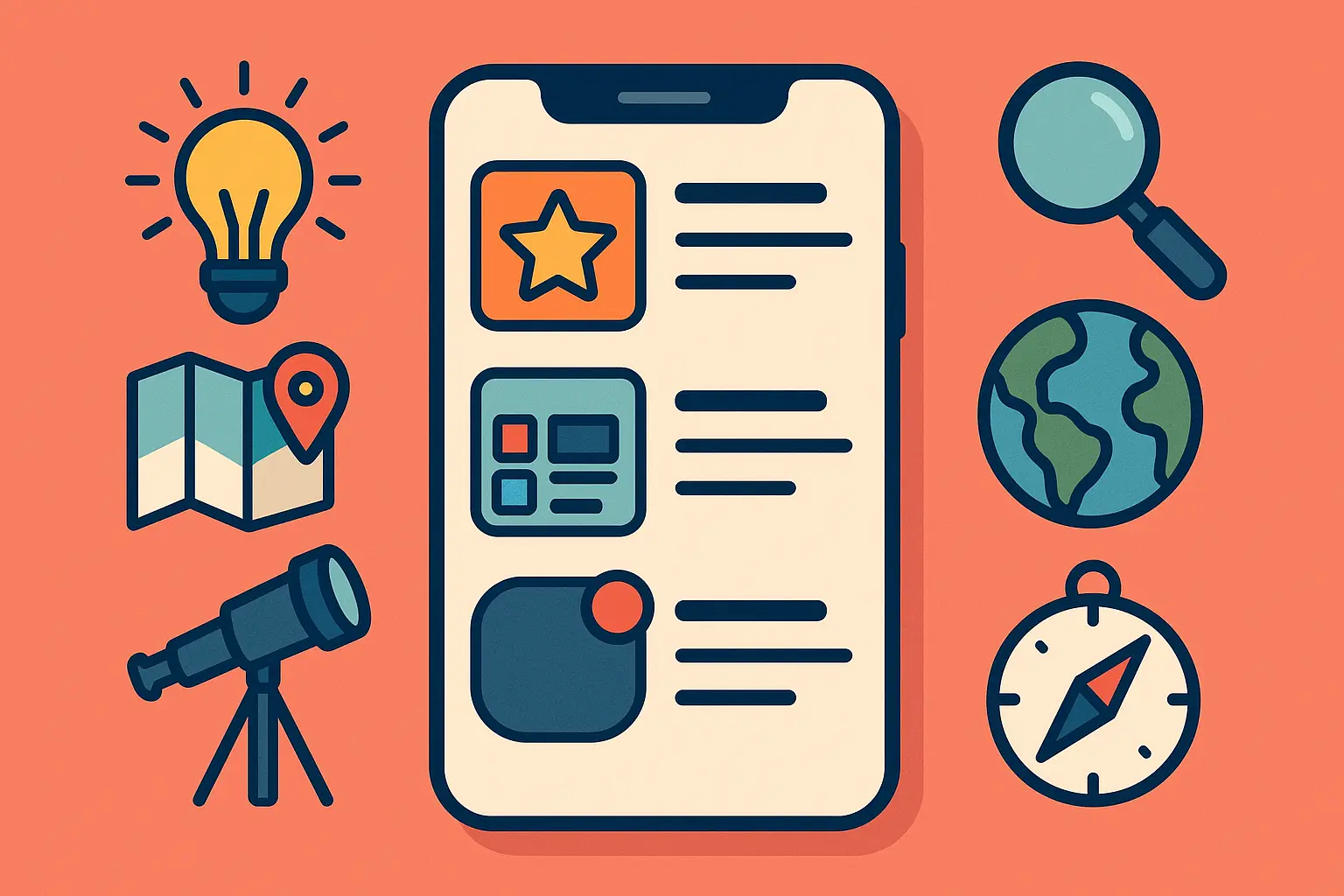
Based on data from Android Authority, the latest September 2025 bulletin listed 119 vulnerabilities compared to previous months with zero or single-digit counts, highlighting Google's new Risk-Based Update System that prioritizes high-risk vulnerabilities in monthly releases while bundling most fixes into quarterly updates.
Protecting Your Updated Device
Your phone just got more secure with that update, but software can't protect against drops and scratches. That's where quality protection comes in.
A freshly updated Android deserves protection that matches its enhanced capabilities. Rokform's military-grade cases provide 6-foot drop protection and premium construction that keeps your device safe while you enjoy those new features and security improvements. The powerful magnetic mounting system is perfect for hands-free use during lengthy system updates, and the slim design won't interfere with wireless charging optimizations that newer Android versions often include.
For Android users who depend on their phones for work or outdoor activities, Rokform cases offer the durability needed to protect your investment while maintaining access to the latest software updates. The RokLock™ mounting system ensures your updated phone stays secure and accessible when you need it most.

The Bottom Line
Updating your Android phone isn't rocket science, but it's not always automatic either. The key is knowing what to do when things don't go as planned.
Most problems come from rushing or skipping the prep work. Take a few minutes to back up your stuff, make sure you have enough battery and storage, and don't panic if something goes wrong - there's usually a fix.
Updates exist to keep your phone secure and running well. Whether it's a small security patch or a major version upgrade, the approach is the same: prepare properly, follow the steps, and don't be afraid to try manual methods if the automatic ones aren't working.
Your updated phone represents a real investment in money and personal data. Protecting it with quality accessories while keeping the software current ensures you get maximum value and security for years to come.
Just as important as keeping your software current is ensuring your device stays protected during daily use. Explore the best magnetic cases for Android to complement your freshly updated device with superior physical protection.









